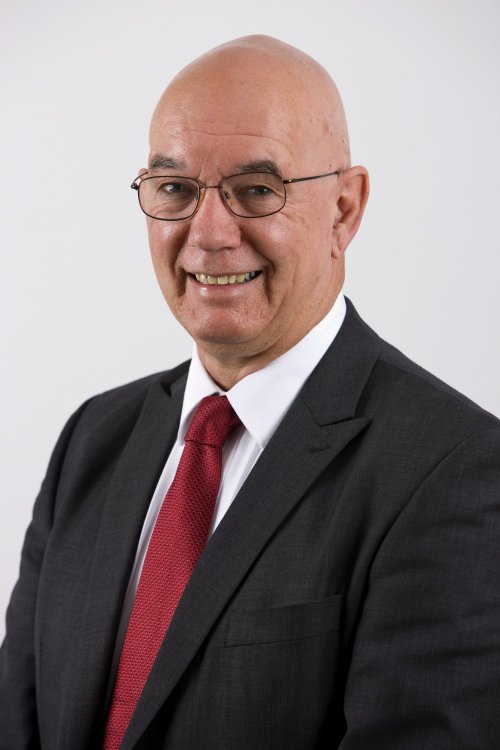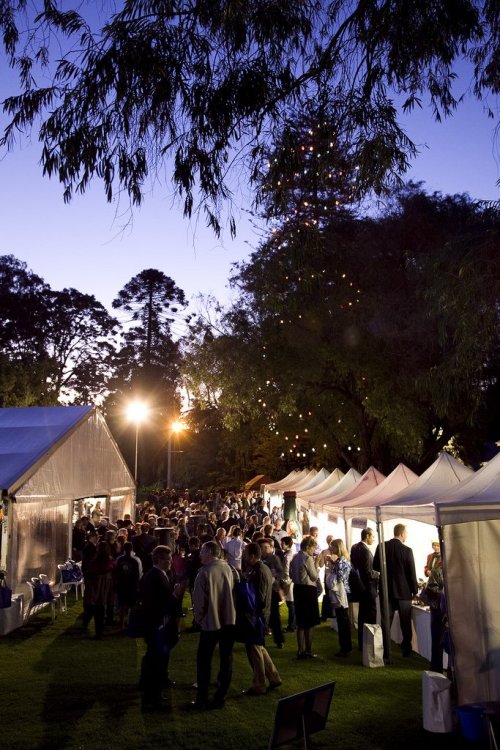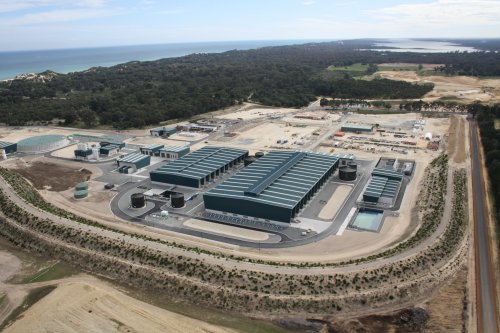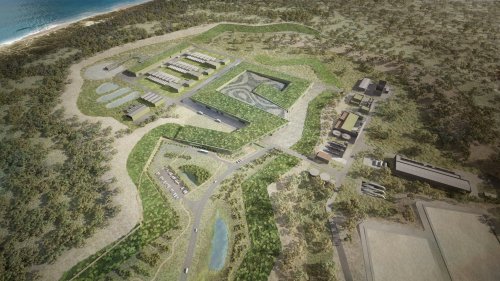Latest trends in optimising desalination technology
Monday, 24 October, 2011
Australia has invested $10 billion in six major seawater desalination plants around its coastline in as many years to waterproof its capital cities - at the same time providing a significant boost for renewable energy.
By the end of 2012, two of the nation’s state capital cities, Perth in Western Australia and Adelaide in South Australia, will be able to have up to half of their drinking water supplied by desalination.
In total, nearly one third of the arid country’s urban water needs will be able to be met from the six major city desal plants which all purchase wind or solar energy, or renewable energy offsets for 100% of energy use.
Desalination offers a significant new (and affordable) sustainable water supply for thirsty Australian cities from a plentiful ocean source which is not affected by drought or climate change, and which allows for the country’s projected population growth.
Managed effectively, these new sources of urban water can mean that harsh water restrictions - which have previously stifled gardening industries where applied - are a thing of the past.
Desalination can also alleviate over-reliance on fragile aquifers and waterways, and doesn’t impact on forest, river and wetland ecosystems, nor scar the landscape like huge dams.
More desal plants for city, regional town and industrial supply are in planning stages to meet further forecast water needs, and there are more than 1000 small-scale desal plants in operation around the country used in mining, resources, rural and remote applications.
Australia is the world’s driest inhabited continent and the continued effects of cyclical droughts and climate change mean its growing population of 22 million (expected to expand 50% by 2050) generally requires up to five times the water storage of an equivalent population in the United Kingdom to secure reliable supply.
Since the country’s first plant was placed into service in 2006 - the environmentally pioneering Perth Seawater Desalination Plant in Kwinana, Western Australia - five more large seawater desalination plants have been created along the coastline with the largest at Wonthaggi, just outside Melbourne, nearing completion.
Desalination capability and technology innovation is flourishing championed by the Australian and state governments, utilities and companies such as Osmoflo, which now has offices in the Middle East and South America and recently announced a new international partnership with GE.
The Australian Government has committed $20 million over five years to the National Centre of Excellence in Desalination Australia, a unique consortium of 13 research universities and national scientific agency CSIRO to develop and commercialise new desalination technologies.
The centre is funded under the Australian Government’s Water for the Future initiative and has attracted a further $22.6 million in support for the first three funding rounds from its 14 research partner organisations, generous industry, business, utilities and state governments.
NCEDA’s new $5 million dedicated Desalination Research Facility and Desal Discovery Education Centre has just been officially opened in Rockingham, WA, partially funded by the WA state government and stocked with $500,000 in donated plant and equipment from generous industry supporters.
The centre collaborates with international research institutions, private companies, governments and water and power utilities to jointly investigate technology improvements and opportunities to commercialise developments.
Thirty-three research projects by NCEDA scientists are currently underway in conjunction with industry and international scientists, and some of these will reduce desalination operating costs, further reduce energy use and carbon footprint, and address the growing issue of currently non-recyclable membrane waste.
NCEDA research projects are centred around themes, solving problems and improving pre-treatment, reverse osmosis desalting, novel desalting, concentrate management and the social, economic and environmental issues surrounding desalination.
New innovations using capacitive electrodeionisation and solar power will deliver benefits and opportunities for business, and sustain remote communities in the Australian outback reliant on inland brackish waterways or contaminated groundwater.
Phytoplankton populations around the new Adelaide desal plant are being studied following marine studies at the Kwinana plant, and both research projects have shown little or no negative impact on marine life.
Recycling and re-use of desal plant reverse osmosis membranes is being investigated to reduce the current 200 tonnes per year of waste which currently goes to landfill, a figure which is expected to significantly rise in coming years as Australia’s plant water production nears capacity.
Options being studied include lower-grade re-use in developing nations and conversion of membrane casings into family potable water containers on wheels to ease the difficulty of carrying water long distances and prevent water contamination in Third World countries.
Postgraduate study and employment of PhD graduates in the desalination industry is also being encouraged, and the centre has just awarded more than $580,000 in desal research scholarships this year for projects including the use of geothermal energy in Multi-Effect Desalination.
In recognition of Australia’s progress in desalination, the country hosted the International Desalination Association’s World Congress in Perth in September, coinciding with the opening of the Water Corporation’s second desal plant and NCEDA’s new Desalination Research Facility and Desal Discovery Education Centre.
|
|
New innovations on show at the congress offered environmental benefits such as solar-powered desalination units by F Cubed and memsys clearwater, and a new green reverse osmosis technology system for water desalination, IDE ProGreen.
Sustainable designs lead by example
The Perth Seawater Desalination Plant at Kwinana could be regarded as a world-leading model for future sustainable seawater desalination plants. At the time of its construction (2005-6), the plant was the largest in the Southern Hemisphere, Australia’s first large-scale seawater desalination facility, and has been the world’s largest to purchase 100% renewable energy.
|
|
It also has low specific energy consumption which is achieved from the plant’s efficient design incorporating isobaric energy recovery devices. Taking this into account and considering its small physical footprint, the Kwinana plant is considered one of the most sustainable water sources in Australia.
Its success led Perth authorities to build a second low-impact plant, which opened in September. The Southern Seawater Desalination Plant was completed ahead of schedule and doubles Perth’s desalinated water resources to around 34%, and all energy used will be offset by energy from renewable sources.
Immediate duplication of the Binningup plant (which cannot be seen from main roads or the coast and features a wildlife corridor) has commenced to meet the expected shortfall in public supplies given predicted ongoing dry seasons in the south-west region of WA. Once expanded, it will then be possible to meet half of Perth’s water needs via the two desalination plants in the short term.
The Victorian State Government’s new Wonthaggi desal plant, the country’s largest and a 100% purchaser of renewable energy sources, is nearing completion and incorporates a number of significant environmental protection and social amenity measures.
|
|
These include a fully architecturally designed facility with intensive landscaping integration, a planted green roof, coastal park, fully underground power supply with co-located broadband communications cable, and long four-metre diameter intake and outlet tunnels.
The site was chosen so that intakes and saline outfalls are into the open sea of Bass Strait, rather than into confined Port Phillip or Westernport Bays.
The extensive underground pipeline connects the plant to Melbourne’s Cardinia Reservoir east of the city and is capable of providing up to one third of Melbourne’s annual water supply.
In conclusion
The future for optimising desalination technology in Australia to produce reliable, safe and sustainable water to meet our future needs continues to be bright.
The National Centre of Excellence in Desalination will soon call for Australian expressions of interest in its fourth funding round of research to boost its 33 projects, and its new Desal Discovery Centre will engage the next generation of young scientists in sustainable water research with school tours, desal kits for schools and hands-on water science demonstrations.
Australian utilities and authorities are increasingly realising that the continuous base load flow of water from seawater desalination is comparatively cost-effective insurance, dramatically reducing the likelihood of water restrictions and safeguarding water-dependent industries’ ability to maintain operations, provide jobs and support the nation’s burgeoning economy and population.
Climatic factors and urban population growth are expected to boost further need for desalination plants - the Federal Government’s Climate Commission recently warned of the imminent threats to the country’s water security from climate change, which will continue to affect rainfall patterns and create increasing uncertainty in water availability.
www.desalination.edu.au
 *NCEDA CEO Neil Palmer is a Director of the International Desalination Association and a Life Member of the Australian Water Association (AWA). Before becoming CEO of NCEDA in 2010, Palmer was General Manager Technical Services at Osmoflo.
*NCEDA CEO Neil Palmer is a Director of the International Desalination Association and a Life Member of the Australian Water Association (AWA). Before becoming CEO of NCEDA in 2010, Palmer was General Manager Technical Services at Osmoflo.
$14K community grant provides water savings for school
Lalor North Primary School has undergone a water-saving transformation thanks to a community...
Lagoon cover dewatering solution for Gippsland Water
Gippsland Water was experiencing issues with its cover dewatering pumps, which were solved...
The role of AI in smart water management
IoT sensors, AI and predictive analytics are emerging as key solutions to enhance water...










